The Romans, with their profound appreciation for wine, transformed it into an essential part of their culture, intertwining it with daily life and sacred rituals. Their innovative techniques, such as foot stomping and barrel aging, not only enhanced flavors but also set the stage for modern winemaking practices. Regions like Campania and Tuscany thrived under their influence, producing renowned wines that still echo in today’s vineyards. As festivals honoring Bacchus filled the air with celebration, one must wonder how these ancient traditions continue to shape our wine culture in the present day.
Key Points
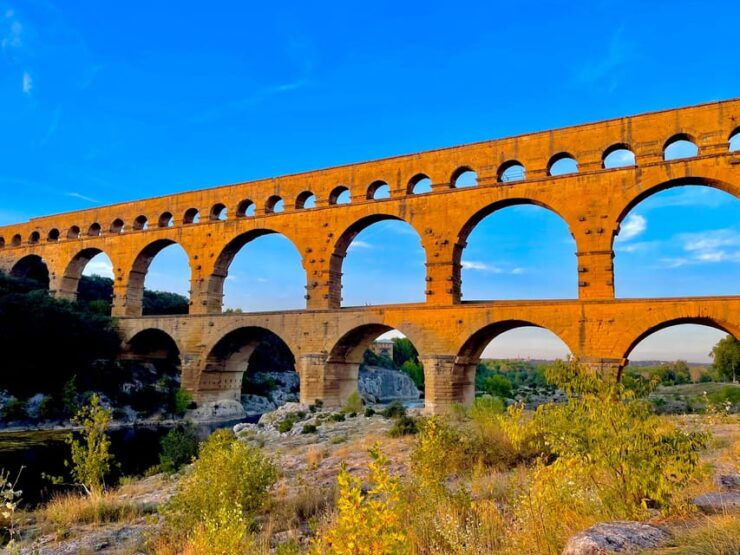
- Romans revolutionized winemaking with techniques like foot stomping, aging in wooden barrels, and blending for unique flavors.
- Key wine regions included Provence, Rhône, Campania, and Tuscany, each contributing distinct grape varieties and characteristics.
- Festivals like Bacchanalia celebrated wine, honoring Bacchus and showcasing Rome’s rich viticulture during communal feasts.
- The legacy of Roman wines influences modern winemaking practices, particularly the emphasis on terroir and grape quality.
- Famous Roman wines such as Falernian and Caecuban set the standard for excellence, impacting contemporary wine culture.
Historical Significance of Romans
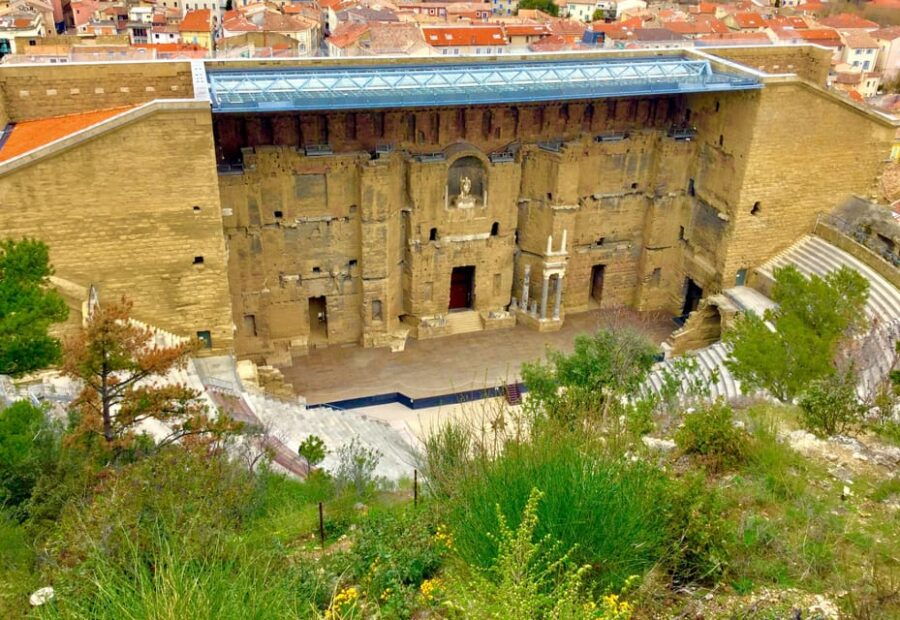
The Romans, with their remarkable engineering feats and cultural advancements, profoundly shaped the landscape and society of ancient Europe, leaving a legacy that still resonates today.
They constructed impressive structures like the aqueducts, which revolutionized water supply, and the Roman roads that facilitated trade and military movement.
Their architectural prowess is evident in the enduring remains of the Roman Theatre of Orange, showcasing their dedication to arts and entertainment.
Plus, Roman governance laid the groundwork for modern legal systems, influencing political structures across Europe.
Through their conquests, they spread not just their language and culture but also innovations in agriculture and urban planning, forever altering the European landscape and setting the stage for future civilizations.
Find more activities and experiences we've covered in Nimes.
Roman Influence on Wine Culture
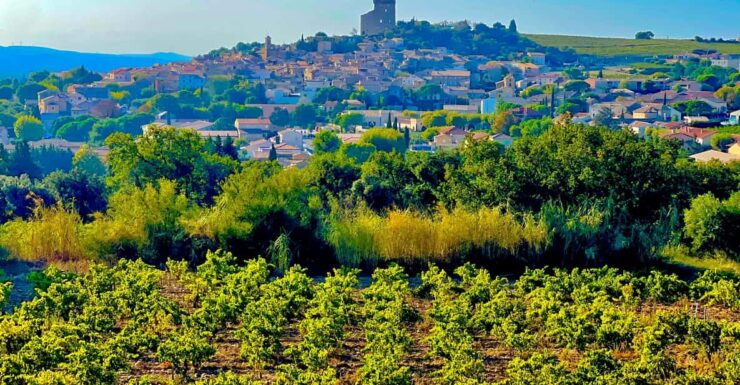
As vineyards flourished across the Roman Empire, they not only cultivated a rich wine culture but also laid the groundwork for viticulture practices that continue to influence winemaking today.
Romans emphasized the importance of terroir, understanding how soil and climate shape wine’s character. They introduced techniques such as pruning, trellising, and the use of barrels for aging, enhancing the quality and complexity of wines.
The Romans also expanded the palette of grape varieties, promoting cultivation across diverse regions. Their love for wine transcended social classes, intertwining it with daily life, religious ceremonies, and festivities.
This cultural integration established a legacy that resonates in modern winemaking, where appreciation for wine remains deeply rooted in both tradition and innovation.
Key Roman Wine Regions
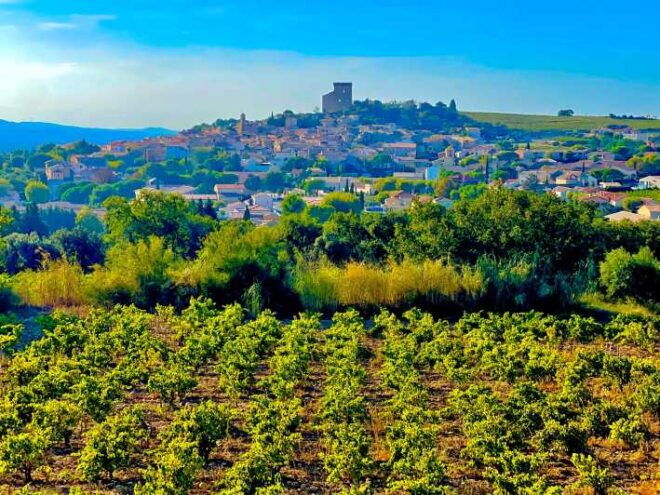
Several key regions across the Roman Empire became renowned for their exceptional wines, each contributing unique characteristics shaped by local climates and soils.
In Provence, with its over 300 days of sunshine, rocky and sandy soils produced low-yield wines with remarkable aging potential.
The vineyards of the Rhône flourished, thanks to the Mediterranean climate, allowing grape varieties like Syrah and Grenache to thrive.
Meanwhile, the fertile lands of Campania, particularly around Mount Vesuvius, offered rich volcanic soil, enhancing the distinct flavors of wines like Falanghina and Aglianico.
Lastly, the regions of Tuscany, with their rolling hills and diverse microclimates, gave rise to iconic Chianti.
Together, these regions shaped the diverse tapestry of Roman wine culture, celebrated for centuries.
Techniques of Roman Winemaking
Roman winemaking techniques blended tradition and innovation, employing methods like foot stomping and the use of clay amphorae to enhance fermentation and flavor extraction. These amphorae, with their unique shapes, allowed for optimal interaction between the wine and the skins, producing rich and complex flavors.
| Technique | Description | Purpose |
|---|---|---|
| Foot Stomping | Crushing grapes by foot, releasing juice | Enhances flavor and aroma extraction |
| Clay Amphorae | Fermenting in large, earthen vessels | Improves aeration and temperature control |
| Aging in Wooden Barrels | Storing wine in oak barrels for maturation | Adds depth and complexity to the wine |
| Filtering | Using cloth or sieve to remove solids | Clarifies wine, improving appearance |
| Blending | Combining different grape varieties | Creates balanced and unique flavor profiles |
Famous Roman Wines
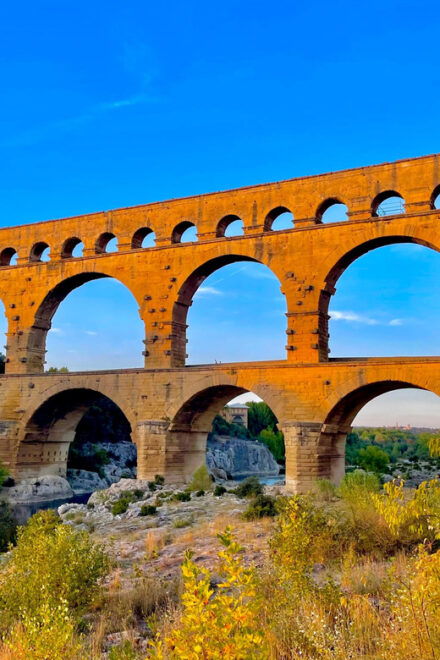
Ancient Rome was renowned for its diverse wine offerings, with celebrated varieties like Falernian and Caecuban captivating the palates of both commoners and emperors alike.
Falernian, often regarded as the finest wine, originated from the hills of Campania and boasted a rich, complex flavor profile that aged beautifully.
Caecuban, another favorite, came from the coastal region of Latium and was praised for its sweetness and aromatic qualities.
Other notable wines included Setinian and Surrentine, each unique to their regions.
Romans not only consumed these wines during lavish feasts but also used them in religious rituals.
The legacy of these famous Roman wines continues to influence modern winemaking, as enthusiasts seek to revive their ancient essence.
- Discover Nîmes While Playing! Escape Game – the Alchemist
- Luxury Mercedes Minibus Transfer in Nimes: Indulge in Style
- Nîmes: Private Guided Walking Tour
- Nimes Historical Center 2-Hour Private Walking Tour
- From Avignon : Full Day Roman Sites and Historical Places
- The Alchemist” Nîmes : Outdoor Escape Game
Modern Wine Production in Provence
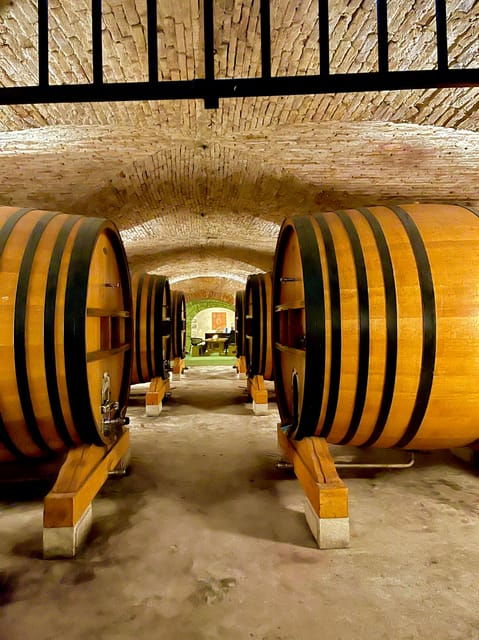
In the sun-drenched vineyards of Provence, winemakers harness the region’s unique rocky and sandy soils to create wines that are celebrated for their exceptional quality and vibrant flavors.
The warm Mediterranean climate, combined with over 300 days of sunshine, nurtures grape varieties like Grenache, Syrah, and Mourvèdre. These elements contribute to low-yield wines known for their remarkable aging potential.
Modern techniques, including precision viticulture and organic farming practices, further enhance the character of these wines, allowing for a more authentic expression of the terroir.
As a result, Provence has become synonymous with exquisite rosés, rich reds, and crisp whites, captivating wine enthusiasts and connoisseurs alike, who flock to explore the region’s diverse offerings and picturesque landscapes.
Roman Festivals and Wine
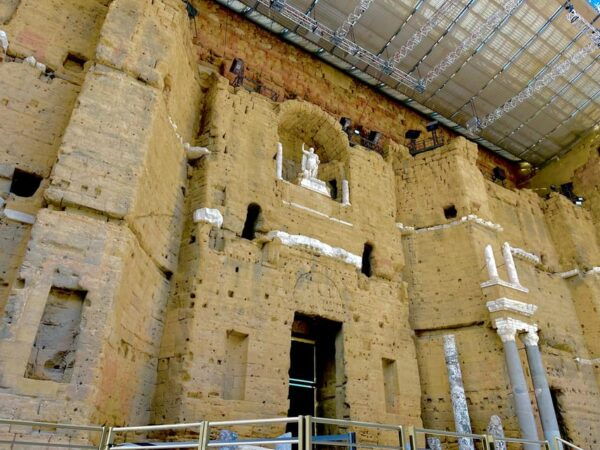
Celebrating the bountiful harvest, festivals in ancient Rome were vibrant occasions where wine flowed freely, symbolizing both abundance and divine favor.
Romans honored Bacchus, the god of wine, through lively celebrations filled with music, dancing, and theatrical performances.
The most notable festivals, such as the Bacchanalia and Vinalia, featured lavish feasts where wine played a central role.
During these events, participants indulged in various types of wine, showcasing Rome’s rich viticulture.
Rituals included pouring wine as offerings to the gods, emphasizing the spiritual connection between wine and divine blessings.
These festivals not only fostered community spirit but also reinforced the significance of wine in daily Roman life, marking it as a vital element of their culture and traditions.
Legacy of Roman Wine Today
The influence of Roman wine endures today, shaping modern viticulture and inspiring winemakers to embrace the rich traditions and techniques established centuries ago.
Many contemporary vineyards continue to utilize Roman methods, such as terracing and specific pruning techniques, to enhance grape quality.
The importance of regional terroir, a concept heavily emphasized by the Romans, remains central to winemaking, allowing for unique expressions of flavor tied to specific locations.
Plus, popular grape varieties like Syrah and Grenache trace their origins back to ancient Rome.
Today’s wine festivals and tasting events celebrate this legacy, inviting wine lovers to appreciate both history and craftsmanship.
The enduring appreciation for Roman wine is evident, as it continues to influence palettes around the world.
Questions You May Have
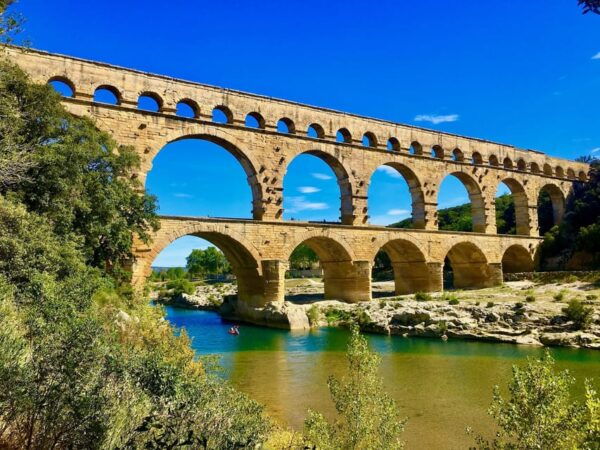
What Were the Main Grape Varieties Used by Romans?
The main grape varieties included Trebbiano, Sangiovese, and Malvasia. These grapes thrived in diverse climates, producing wines that delighted palates across regions. Their rich flavors and aromas continue to influence modern winemaking practices today.
How Did Romans Transport Wine Across Their Empire?
To transport goods efficiently, they utilized an extensive network of roads and waterways. Skilled merchants loaded amphorae onto carts and ships, ensuring safe passage across vast distances, while maintaining the quality of their precious cargo.
What Role Did Wine Play in Roman Social Gatherings?
In social gatherings, wine fostered connection and conversation. Guests enjoyed its varied flavors, enhancing meals and celebrating life. It symbolized status, encouraging camaraderie and lively discussions, making gatherings memorable and culturally significant in their community.
Did Romans Have Any Wine-Related Rituals or Ceremonies?
The Romans celebrated various wine-related rituals, including libations to gods, toasting for health and prosperity, and elaborate feasts. These ceremonies strengthened social bonds, marking significant events with shared experiences and communal enjoyment of wine.
How Did Roman Winemaking Techniques Influence Modern Practices?
Modern winemaking techniques owe much to ancient practices. They’ve adopted fermentation methods, grape selection, and aging processes, enhancing quality and flavor. Innovations continue to evolve, yet the foundation remains rooted in these time-honored traditions.
Break Down
The Romans’ profound impact on wine culture is undeniable, weaving their practices and traditions into the very fabric of viticulture.
Their innovative techniques and celebrated wine regions set the stage for modern winemaking, while festivals honoring Bacchus highlighted wine’s integral role in society.
Today, their legacy endures, influencing contemporary wine production and appreciation.
As wine lovers raise their glasses, they honor the ancient Romans whose passion for wine continues to inspire generations.
You can check if your dates are available here:More Tour Reviews in Nimes
- Best Intro to Nîmes in 2 hours with a Local
- Nîmes – Experience a day like a Roman in ancient times
- Nîmes, chronicle of a legacy from the Enlightenment to the Belle Époque
- Nimes: Ancient Roman Arena Ticket & Old Town Audio Tour
- Nîmes your way Personalized private tour
- Nîmes: Express Walk with a Local in 60 minutes
Looking for something different? Other Nimes activities we've written about
- Best Intro to Nîmes in 2 hours with a Local
- Nîmes – Experience a day like a Roman in ancient times
- Nîmes, chronicle of a legacy from the Enlightenment to the Belle Époque
- Nimes: Ancient Roman Arena Ticket & Old Town Audio Tour
- Nîmes your way Personalized private tour
- Nîmes: Express Walk with a Local in 60 minutes
- Roman and Gourmet Nîmes
- Saint Gilles: Tour of an olive oil mill in an organic olive grove
- Surprise tour of Nîmes
- Nimes Food Tour
- Nîmes Challenges EVG EVJF City Challenge team
- Nîmes: Escape game outdoor team on the theme of magic
